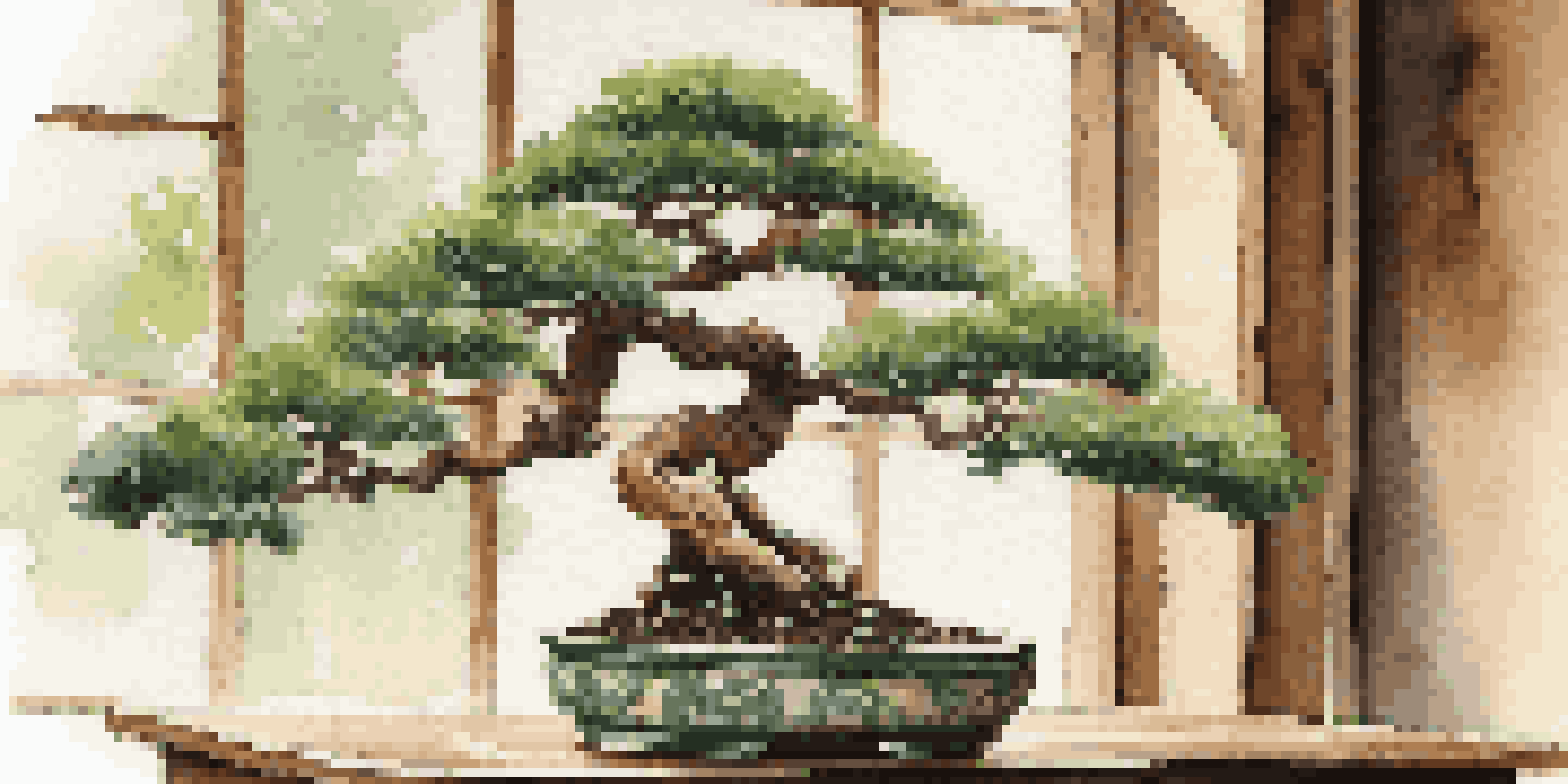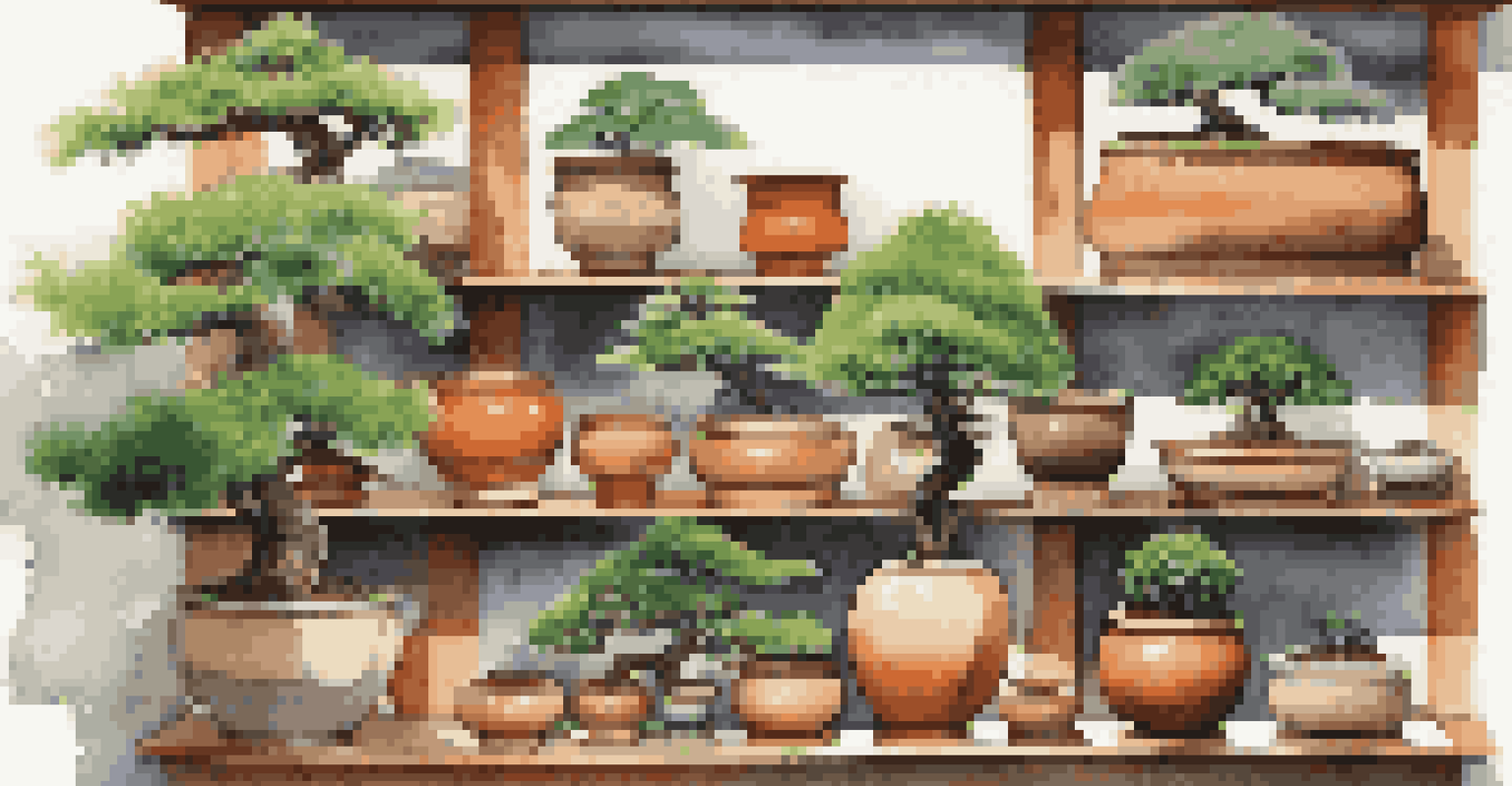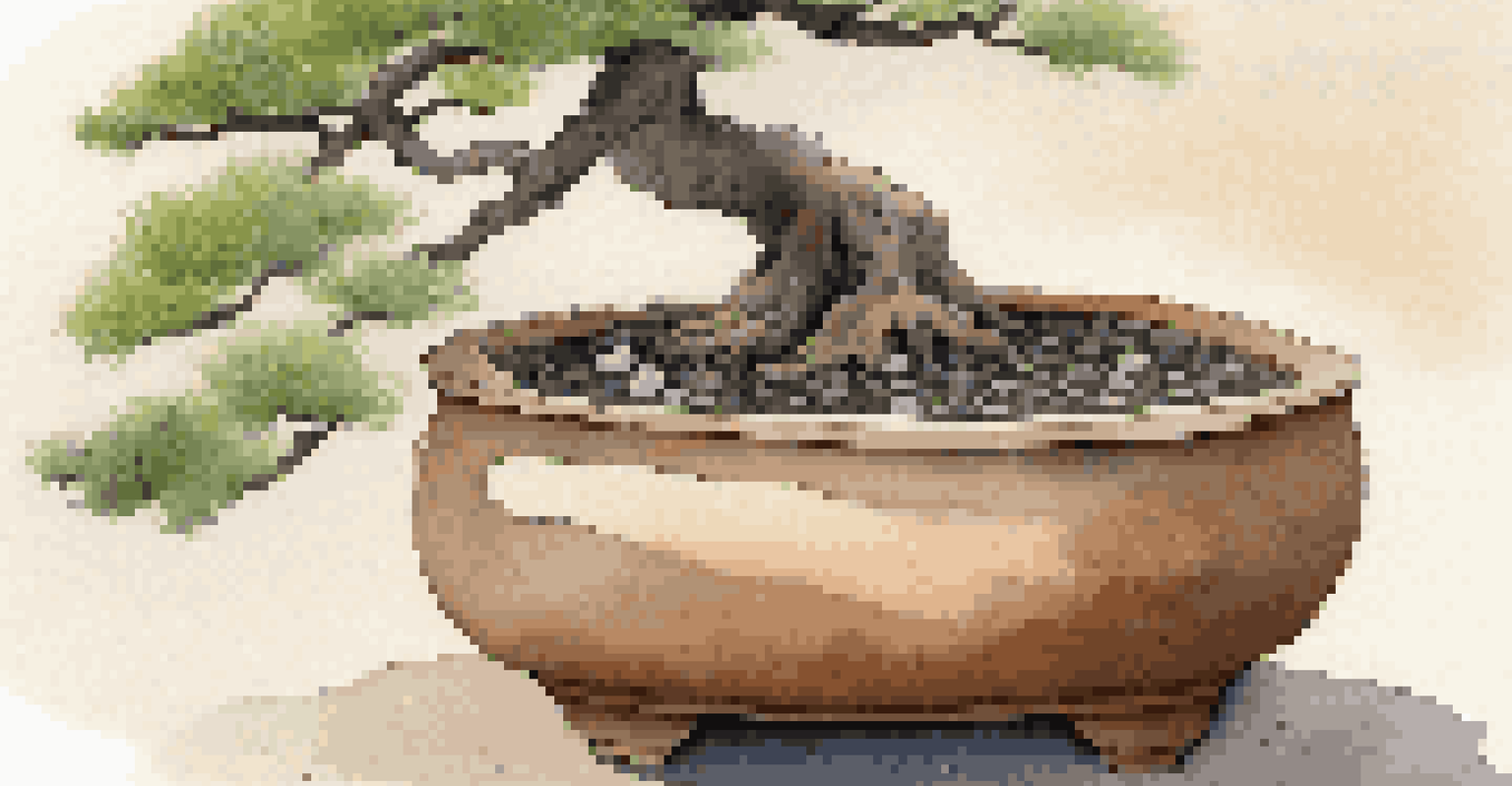Choosing Pots for Bonsai: Aesthetic and Practical Considerations

Understanding the Importance of Bonsai Pots
When it comes to bonsai, the pot you choose plays a crucial role in both aesthetics and the health of your tree. A pot is not just a container; it’s a key element that can enhance the beauty of your bonsai while providing the necessary support for its growth. It’s important to remember that the right pot allows roots to breathe and ensures proper drainage, which are vital for a healthy bonsai.
The pot is a reflection of the tree's beauty and the artist's vision.
Additionally, the pot serves as a canvas that showcases the artistry of your bonsai. Just like a painting needs the right frame, your bonsai needs a pot that complements its style and species. The color, texture, and shape of the pot can either harmonize with or detract from the tree’s natural beauty, making your choice all the more significant.
In essence, choosing the right pot is a balance of aesthetic appeal and practical functionality. It’s about finding a container that not only looks good but also supports the tree’s health and growth. So, let’s dive deeper into the factors you should consider when selecting the perfect pot for your bonsai.
Choosing the Right Size for Your Bonsai Pot
The size of the pot is one of the most critical factors to consider when potting your bonsai. A pot that’s too small can restrict root growth, while one that’s too large can lead to excess moisture and root rot. Ideally, you want a pot that allows the roots to spread out comfortably, providing enough space for growth without overwhelming the tree with extra soil.

As a general rule, the pot should be about two-thirds the height of the tree and wide enough to accommodate the root system. This proportion creates a balanced visual effect and ensures that the tree has adequate support. Keep in mind that different species may have varying requirements, so it’s always good to research specific needs.
Pot Size Impacts Bonsai Growth
Choosing the right pot size is crucial for promoting healthy root growth and ensuring the overall aesthetic balance of your bonsai.
In summary, selecting the right-sized pot is about creating harmony between the tree and its container. A well-sized pot will promote healthy growth and enhance the overall appearance of your bonsai, making it a joy to care for and admire.
Material Matters: Choosing Pot Materials Wisely
The material of your bonsai pot can significantly impact both aesthetics and functionality. Common materials include ceramic, plastic, and terra cotta, each with its own advantages and disadvantages. For instance, ceramic pots often come in beautiful glazes, making them visually appealing, but they can be heavy and may not provide the best drainage.
Choosing a pot is as much about aesthetics as it is about the health of the tree.
Plastic pots, on the other hand, are lightweight and often have good drainage options, but they may not have the same aesthetic appeal. Terra cotta pots are porous, allowing for excellent airflow and drainage, but they can dry out quickly. Understanding the properties of each material will help you make an informed choice that suits your bonsai’s needs.
Ultimately, the pot material should reflect your personal style while also serving the health of your bonsai. By considering the pros and cons of each material, you can select a pot that meets both aesthetic desires and practical requirements.
The Aesthetic Appeal of Pot Shape and Design
The shape and design of a bonsai pot can dramatically influence the overall aesthetic of your bonsai display. Common shapes include oval, rectangular, and round, each conveying different styles and emotions. For example, a round pot often complements a tree with a softer, more flowing form, while a rectangular pot can enhance the structured appearance of a more upright species.
In addition to shape, decorative elements such as patterns, textures, and colors can further enhance visual appeal. A pot with a rustic finish may evoke a sense of age and tradition, while a sleek, modern pot can create a minimalist look. The key is to choose a pot that aligns with the style of your bonsai and your personal taste.
Material Affects Drainage & Style
The material of your bonsai pot influences both its appearance and functionality, impacting drainage and the health of your tree.
In summary, the pot’s shape and design are not just about looks; they also play a role in conveying the essence of your bonsai. By selecting a pot that complements your tree's form, you can create a stunning visual display that captures attention and admiration.
Drainage: A Vital Consideration for Bonsai Pots
Good drainage is essential for the health of your bonsai, making it a crucial factor when selecting a pot. Without proper drainage, excess water can accumulate, leading to root rot and other issues. Most bonsai pots come with drainage holes, but it's important to ensure they are adequate for your specific tree species and soil mix.
If you’re using a pot without drainage holes, consider adding a layer of gravel or coarse sand at the bottom to help facilitate drainage. Alternatively, you may opt for a pot with built-in drainage systems, which can provide added assurance. Monitoring the moisture levels in your bonsai pot will also help you determine if your drainage system is effective.
Ultimately, prioritizing drainage is about ensuring your bonsai remains healthy and vibrant. By choosing a pot that promotes proper water flow, you’ll create an environment that allows your tree to thrive.
Seasonal Considerations When Choosing Bonsai Pots
When selecting pots for your bonsai, it’s essential to consider the seasons and how they affect your tree’s growth. Different seasons can impact the moisture levels in the soil, temperature, and even the pot's material performance. For example, during the hot summer months, a pot that retains heat may dry out soil faster, requiring more frequent watering.
Conversely, in colder months, some materials may not insulate as well, leading to potential freezing of the roots. This is particularly important if you live in an area with temperature fluctuations. Being aware of seasonal changes will help you make informed choices about pot selection to ensure your bonsai remains healthy year-round.
Seasonal Factors Influence Pot Choice
Considering seasonal changes is important when selecting bonsai pots to ensure your tree remains healthy throughout the year.
In summary, considering seasonal factors when choosing your bonsai pots ensures that your trees are well-protected and cared for. By adapting your pot choices to the changing seasons, you can maintain a thriving bonsai regardless of the weather.
Budgeting for Your Bonsai Pot Choices
While the aesthetic and practical considerations of bonsai pots are vital, budgeting is another important aspect that can't be overlooked. Bonsai pots can vary widely in price, from affordable plastic options to high-end handcrafted ceramics. Setting a budget before you start shopping can help narrow down your choices and prevent impulse purchases that might not suit your bonsai’s needs.
It’s also worth noting that investing in a quality pot can pay dividends in the long run. A well-made pot can last for years and contribute positively to your bonsai's health and aesthetics. Consider shopping from local artisans or reputable online retailers to find pots that fit both your budget and your bonsai’s requirements.

Ultimately, budgeting for bonsai pots allows you to make thoughtful choices that enhance the beauty and health of your trees. With a clear understanding of your financial limits, you can explore a wide range of options without breaking the bank.